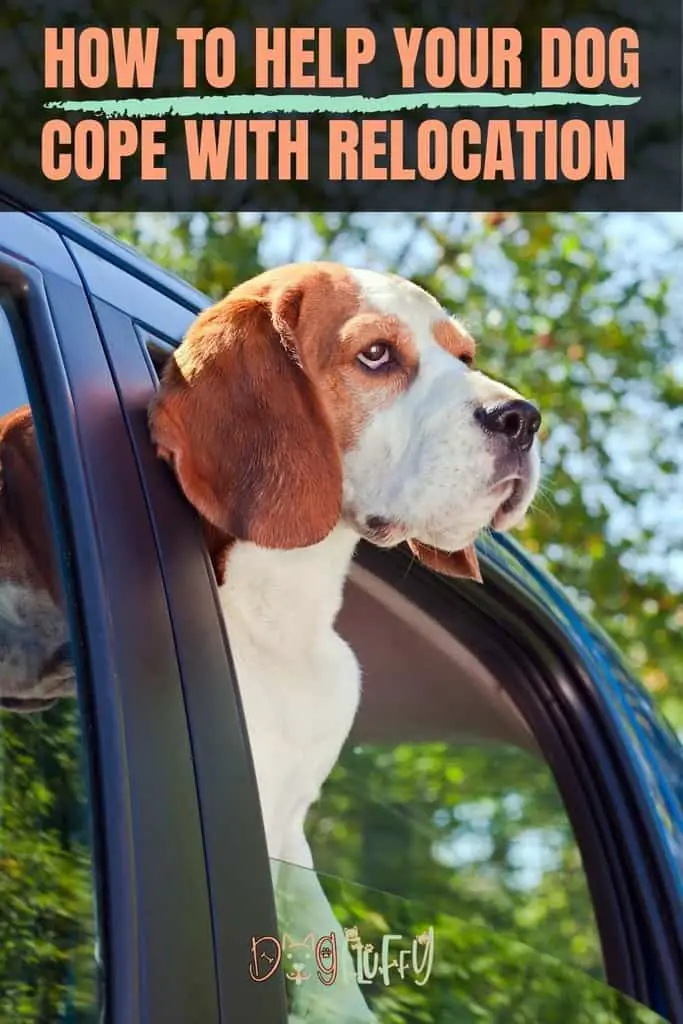What to Know
Relocating to a new home is often an emotional and stressful experience for most people. However, the event can prove far more trying for the family dog.
Signs A Move Is Causing A Dog Anxiety

How To Help Your Dog Cope With Relocation Best Guide
Being non-verbal creatures, dogs often give off specific signs indicating they are feeling upset or tense. Therefore, during and immediately after the relocation process, it is crucial for dog owners to be alerted to behaviors such as:
Hiding
Stressed animals may use avoidance as a means of coping. Therefore, said creatures might seek refuge in unusual places, like isolated corners, behind parked cars, and behind trees.
Panting
Tension can lead to an elevated body temperature and an increased breathing rate. These clinical features often precipitate panting.
Yawning
When feeling anxious, dogs tend to yawn. Typically, such occurrences are longer and of greater intensity than typical expressions.
Loss Of Bodily Functions
As is often witnessed in human subjects, heightened stress stimulates excretory functions. Dogs are no different and often urinate or defecate more when experiencing trying circumstances.
We earn a commission if you click this link and make a purchase at no additional cost to you.
Pacing
Another nerve-battling trait dogs copy from their human friends is pacing. It is not uncommon for a dog to pace back and forth when dealing with an anxiety-laden situation.
Vocalizing
Nervous dogs tend to vocalize more. Such action could take the form of barking or even whining. This is especially true of animals that typically do not speak often.
Shedding
Believe it or not, dogs shed at a greater rate when facing perceived tumult. Just as humans can literally pull their hair out when under duress, dogs also lose their fur at more expedient rates when tense.
Specific Stress-Busting Tips
We earn a commission if you click this link and make a purchase at no additional cost to you.
Helping the family dog cope with relocation is a major process that should occur before, during, and immediately after the move. Specific tension-reducing steps pet owners are encouraged to take include:
Visiting The New Location
If possible, dog parents are urged to bring their furry friend to the new home. Said action will enable the animal to grow acclimated to what will become their new surroundings.
While in the new abode, veterinary professionals encourage people to spend quality time with their dogs and allow them to explore. In addition to helping them get used to the environment, the human’s scent will be created. This will render the location less unfamiliar when the actual move occurs.
Pack An Essentials Bag
On the day the move is scheduled, dog lovers should consider packing an essentials bag. This parcel contains pertinent items, such as food, treats, needed medications, water, toys, and any other miscellaneous items the dog might need to complete the journey.
Taking this action will render placating the animal easier. This is particularly the case when they grow especially anxious or agitated.
Let The Dog Release Energy
We earn a commission if you click this link and make a purchase at no additional cost to you.
During the relocation stage, owners are urged to stop periodically to allow their dogs to release energy.
For example, at rest stops, the family should take their canine companion for a nice, long walk or allow their pet to run around and blow off steam. Such activity will make the dog in question happier, render them less tense, and reduce the risk of untoward events like excretory accidents.
Maintain A Routine
Dogs are creatures of habit. Ergo, maintaining as much of their accustomed routine as possible could go a long way towards alleviating the tension they feel. Therefore, pet owners are encouraged to feed them at normal times and take them for walks when such events would typically occur.
Establish Space
Once inside the new residence, pet parents should allow their dogs to explore and designate their own special spaces. These specific places will serve as the animal’s sanctuaries.
Show Attention
Granted, people face a plethora of tasks when first moving into a new home. However, they should not forget to spend time with their furry friends. Doing so will lessen the animal in question’s anxiety levels and bring about a sense of normalcy.
Remain With The Dog Early On
Animal behavior experts maintain owners should refrain from leaving their dogs alone in a new house during their first several days in said residence. Leaving dogs to their own devices could heighten their anxiety and precipitate potentially untoward behavior like excretory accidents and property destruction.
Display Patience

Moving is stressful for all living creatures involved in such an event. That said, dog owners are implored to display extra patience during the process. Dogs often pick up on their owner’s emotions and, if said subject appears tense and agitated, the dog is likely to follow suit.




